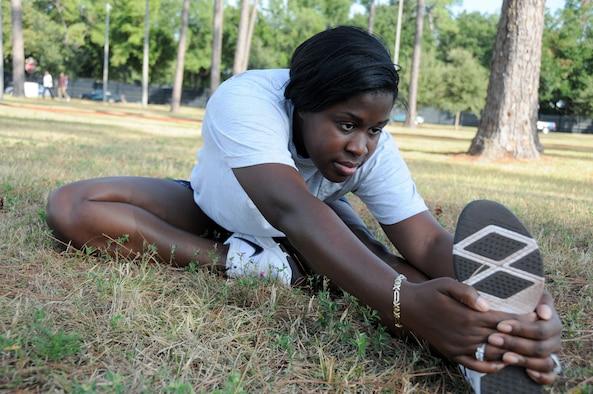The good news is that there are plenty of special techniques you can use, and activities you can do, to make exercising with COPD easier and more fun. With the right exercise routine and treatment plan, you can get all the physical activity you need to stay healthy without feeling breathless and fatigued.
Why Exercise is Important When You Have COPD

Regular exercise is necessary for a healthy lifestyle, whether you have a chronic disease or not. But when you have a serious respiratory disease like COPD, regular exercise is a necessity to prevent your disease from getting worse.
Physical activity is just as important for your heart, lungs, and muscles as it is for your psychological and emotional health. It gives you strength, energy, confidence, and is a great mood-lifter, too.
Although you might feel breathless easily when you first start out, regular exercise can actually strengthen your breathing muscles and make it easier to breathe in the long run. Also, getting out your energy through physical activity during the day will help you sleep easier and more comfortably at night.
Staying active will help you feel better, eat better, and increase your overall stamina and endurance. It also helps keep your heart healthy, boosts your immune system, and reduces your risk for heart disease and other complications. But it comes with more than just physical benefits; exercise can improve your mental health, too.
Living with COPD can be stressful and overwhelming, but physical activity can help relieve your worries and stress. Another benefit of staying active that's often underestimated is self-confidence. The satisfaction you gain from seeing yourself make progress and get stronger as you exercise is empowering and invaluable.
How Exercise Benefits Your COPD

It's important to understand that nothing, including exercise, can cure or reverse the severity of your disease. However, it can prevent your COPD symptoms from getting worse, and can slow down the progression of your disease.
Here is a list of some of the most important benefits you can gain from regular exercise when you have COPD:
- Symptom improvement, including reduced breathlessness and fatigue
- Stronger muscles and improved muscle tone
- Improved balance and flexibility
- Better circulation
- Lower blood pressure
- Better sleep and less restlessness
- A healthy weight (and the ability to lose weight, if needed)
- Reduced anxiety and depression
- Stronger bones
- Better self-esteem and self-image
- Increased strength, mobility, and ability to do daily activities
It's hard to overstate the benefits of regular activity when you have COPD. If you have trouble staying motivated, just remember that regular exercise can mean the difference between an early death or a long, fulfilling life with your COPD symptoms under control.
{{cta('fa8abc2a-1e88-4fa3-82fd-1cb5b9ed43b2','justifycenter')}}
Preventing Progressive Physical Decline
Hopefully, a better understanding of the benefits of exercise is enough to motivate you to get started. However, it's just as important to know the consequences of not exercising and the effects it can have on your COPD.
Here are some of the consequences of not exercising when you have COPD:
- Muscle wasting, weakness, decreased physical strength
- Worsened breathlessness
- Weight gain
- Depression and anxiety
- Loss of independence and increased difficulty with everyday activities
Even if what you have to gain from regular physical activity isn't enough to motivate you, you should understand that you still have a lot to lose if you choose to stay sedentary.
Even if you feel weak and have difficulty breathing right now, it's no excuse to avoid exercise. If it's difficult now, it will only get worse and worse with time if you don't find a way to stay active.
The Basics of Exercising with COPD
Working With Your Doctor
When you have COPD, it's very important that you work with your doctor to put together an exercise routine that works for you. Every person and every case of COPD is unique, and different people might need to focus on different areas of strength.
You should plan to meet with your doctor to discuss physical activity as soon as possible after getting diagnosed with COPD. Make sure to talk to your doctor about all of your symptoms and physical struggles so he can tailor your exercise plan to your needs.
Exercising with COPD often requires special considerations and techniques so as not to make you feel breathless too easily. Make sure you talk to your doctor about how often and how long you should exercise, if there are any activities you should avoid, and if there are medications you can use to make exercising easier.
Exercising at Home
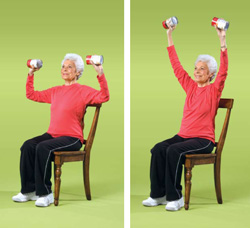
When you have a serious illness that makes it difficult to breathe, it can be hard to make it to the gym on a regular basis. This is especially true if you have decreased mobility or use supplemental oxygen.
That's why many people with COPD opt for exercise routines that they can do at home. It can make it easier to stay motivated, help you stick with a routine, and keeps you close to your medication, supplemental oxygen, and all the comforts of home.
While some people prefer the gym and think that it makes sticking with a routine easier, it's possible to get all the physical activity you need in and around your own home. All you need is an open space to move your body, a chair, and a small set of free weights to do all the exercises you need to stay healthy.
What Kinds of Physical Activities Are Recommended for COPD Patients?
When you have COPD, it's important to start any new exercise routine by taking it slow and setting small, realistic goals. Exercising is safe for your lungs as long as you stay within your doctor's recommendations and limitations, but you should still take care not to overexert yourself or push yourself too hard.
Every person's exercise plan with COPD looks different, and your routine might be more or less intense than other patients' based on your physical condition and the severity of your disease. The important part is to make progress without stretching yourself too far, and to set personal, reasonable goals that you can realistically meet.
That said, there are three things that every healthy exercise plan should include: cardiovascular activity, strength training, and stretching. We'll go through each one by one.
Cardiovascular Exercise

Cardiovascular exercise is a type of activity that includes walking, running, biking, swimming, and much more. It tends to work out large muscle groups and it's all about getting your heart pumping and keeping your body continuously moving.
Regular cardiovascular activity is vital for your heart and lungs and is an effective way to improve your overall tolerance for physical activity. Over time, cardiovascular exercise can lower your blood pressure and heart rate, strengthen up the muscles you use to breathe, and make it so your heart and lungs don't have to work as hard when you're active.
Cardiovascular exercise is also a great way to lose weight and improve your body's overall metabolism. Most doctors recommend getting 20-30 minutes of cardiovascular exercise at least three times a week, but you might need to work up to that amount slowly over time. Also, make sure you talk to your doctor before starting any new exercise routine.
Cardio exercises are usually divided into two groups: high impact (requiring a great deal of exertion) and low impact (requires less exertion). If your COPD is severe or you suffer from chronic pain, you may need to stick with low-impact exercises so you don't push yourself too hard.
Strength Training

Strength training is a kind of anaerobic exercise that includes weight training, abs workouts, lifting, and more. It usually involves standing or sitting in one place and working out one muscle group at a time by flexing and lifting parts of your body.
There are many different benefits of strength training, including increasing your overall strength and endurance and boosting your metabolism. With this kind of exercise, you can gradually build up strength, balance, and endurance and focus your efforts on specific parts of your body that you want to improve.
Strength training exercises are often split up into two more categories: upper and lower body exercises.
Working out the muscles in your upper body is especially important if you have COPD, because it can strengthen the respiratory muscles you use to breathe. Upper-body strength training focuses on the arms, shoulders, neck, chest, abdomen, and back.
Lower-body strength training exercises are also important, because they can improve your mobility by making it easier to stand and walk for extended periods of time. Lower-body exercises include activities that work out your thighs, calves, ankles, and buttocks.
Stretching

Some people do a combination of strength training and cardiovascular training in the same workout, while some people alternate focusing on one or the other on different days of the week. Stretching, however, is something that you should do every day, and especially before every single workout.
Stretching can help you feel better by improving your range of motion, improving your flexibility, and reducing stiffness in your muscles and joints. It's a perfect way to start your day when you get up in the morning or to get your blood flowing when you've been sitting still for awhile.
Stretching is also an important safeguard against getting injured, which is why you should always stretch for 5-10 minutes before beginning any kind of physical activity. You should stretch each part of your body for at least 10 seconds to reduce your chance of muscle strain, soreness, and injury when you exercise.
Warming Up and Cooling Down
Every workout you do should include a brief 5-10 minute warm-up period before your main exercise and a 5-10 minute cool-down session afterward. This helps prevent injury and overexertion, and helps your body slowly adjust to increased activity.
This is especially important to do when you have COPD, so make sure you don't forget these steps.
How to Warm Up
A good warm-up exercise allows you to slowly and gradually increase your heart rate and breathing rate. This reduces strain and pressure on your heart and lets your body get accustomed to the physical activity.
As you do your warm up, start with easy, slow movements and increase your effort and level activity gradually as you go. You should always include at least a few minutes of stretching in your warm-up to loosen up your muscles and joints.
Here are some examples of common, effective warm-up exercises:
- Stretching your legs, arms, waist and neck
- Gently moving your joints, including your ankles, knees, shoulders, and elbows (move them left and right, up and down, and in a circular motion one at a time)
- Walking
- Very light, slow versions of your main workout activities
How to Cool Down
Cool-down sessions are very similar to warm-up sessions, except you want to slowly decrease your level of activity as you go, instead of increasing it. Start by gradually decreasing the intensity of your main workout toward the end, then cool down by walking, stretching, and doing light, low-impact movements.
A good cool-down session will reduce your heart rate and body temperature slowly back to normal and help you feel less sore and fatigued after your workout. Just make sure to decrease your exercise intensity little by little, and don't forget to spend a few minutes stretching your worn-out muscles before you call it a day.
Control Your Breathing
What makes exercising the hardest for people with COPD is the constant threat of breathlessness. If your disease is severe, even short periods of light activity can make it difficult to breathe.
That's why deep breathing techniques are an essential part of exercising when you have COPD. If you can prevent shortness of breath while you exercise, you'll have more energy and endurance to devote to getting in shape.
Make sure to practice breathing exercises and take breaks whenever you feel exhausted or short of breath. If you struggle with breathlessness often, talk to your doctor about pulmonary rehabilitation, supplemental oxygen, or other medications that might help you better control your breathing while you exercise.
It can be overwhelming and difficult to think of what to do when you can't catch your breath, which is why most doctors recommend that you take time to practice breathing exercises every day, even when you don't feel breathless. That way, when the time comes that you are struggling for air, you'll be able to easily remember the steps and bring your breathing back under control.
Pursed Lips Breathing
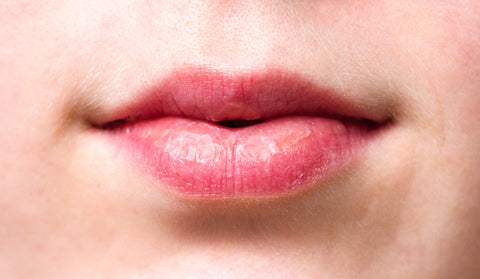
This breathing technique helps push trapped air out of your lungs and keeps your airways open longer so it's easier to breathe. You should use this breathing technique any time you exert yourself, do any kind of physical activity, or start to feel breathless.
Here's how to practice the pursed lips breathing technique:
- Relax your shoulders and straighten your back
- Take a deep breath in through your nose, making it last about 2-5 seconds.
- Then, purse your lips together, as if you were going to whistle or blow a kiss.
- Breathe out for about twice as long as you inhaled, but through your mouth instead of your nose (about 4-10 seconds).
- Repeat.
Diaphragmatic Breathing
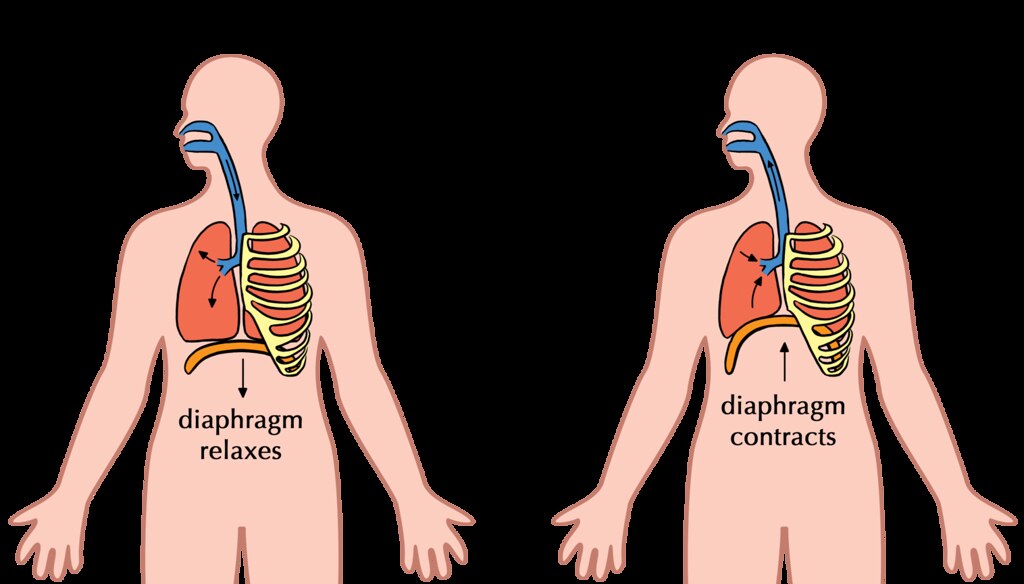
The purpose of diaphragmatic breathing is to help you use your diaphragm, instead of your chest muscles, to breathe. This technique helps you strengthen your diaphragm and use less effort and energy to breathe.
Here's how to practice the diaphragmatic breathing technique:
-
This technique is easiest to practice when you lie down flat on your back, but you can do it while standing or seated as well.
-
Lay one of your hands on your stomach, and the other on your chest.
-
Take a slow, deep breath in through your nose. Pay attention to your hands on your chest and abdomen; you want to feel your stomach rise as you inhale, and your chest to stay still.
-
Exhale slowly through your mouth, again paying attention to how your chest and abdomen move. You should feel your stomach deflate and your chest should stay as still as possible.
- The goal of this exercise is to focus on using your abdomen (diaphragm) to breathe. You should try to keep your chest as relaxed and still as possible, while moving only your stomach when you breathe.
Cardiovascular Exercises You Can Do at Home for COPD
Walking

Walking is a great light, low-impact exercise that's easy to do at home if you have COPD. It's a great way to improve your endurance, and studies show that walking at least four hours per week alone can significantly reduce your risk of heart disease.
The great thing about walking is that you can go at your own pace and it's easy to sit down and take a break whenever you feel tired or breathless. You can get your exercise by walking in your yard or around your neighborhood, or you could go out to a local park or trail for a more scenic stroll.
Here are some tips for walking for exercise when you have COPD:
-
Start small and slow. Don't push yourself too hard at first, but don't give up too easily, either.
-
Add a certain number of feet or steps on to the length of your walk every day (an extra 10 feet a day is a reasonable goal). If you ramp it up gradually, you will steadily get stronger with hardly any extra effort.
-
To control your breathing, exhale through pursed lips for about twice as long as you inhale. It can help to count the number of steps you take while you breathe in, and then take twice as many steps as you breathe out. This is a great way to get a steady rhythm going so you can keep control over your breathing.
- Make sure to turn around soon enough or walk a short enough loop that you can make it back to where you started before you get too fatigued. Don't be afraid to stop and rest any time you feel too tired or breathless, and don't start again until you are breathing normally.
Aerobics

You've probably heard of aerobics classes before; you can usually take them at your local gym or you can follow along with an aerobics training video at home. Even though they had their peak in the 80's, aerobics video routines are still an extremely effective, engaging way to get a good workout.
You can purchase aerobics workout DVDs or get a free aerobics workout by watching any of the many videos available on YouTube and elsewhere online. The best thing about it is that there are so many different kinds and lengths of aerobic workouts. You can tune in to a short ten-minute routine or a 30-minute one, or you can string several short aerobic workouts together with rests in between.
You can do dance aerobics, step aerobics, water aerobics, strength-training aerobics, and more. Aerobic workouts can be extremely satisfying and fun, and you're bound to be able to find a style that fits your interests.
Stair Climbing
Stair climbing is a moderate-intensity activity that you can do at home or any place with a set of stairs. Just make sure you have a handrail to stabilize yourself and stop to take breaks whenever you feel out of breath.
It's important to control your breathing, so practice slow, pursed-lips breathing as you do this exercise.
Tips for Stair Climbing with COPD
- Take a deep breath in before you start ascending the stairs.
- Take two steps up while you exhale slowly through pursed lips.
- Take another breath in and rest a moment before continuing
- Take another two steps up while you exhale again
- Descending the stairs isn't nearly as difficult, and you should be able to take more steps with each breath. Start on the inhale and count how many steps you can take down as you breathe in. Then, try to take twice as many steps down on your exhale as you breathe out slowly.
- Take your time! It's not a race or a contest, and it's okay to take it as slowly as you need to. You'll build up strength with time, but you have to start at your own pace.
Other Aerobic Exercises for COPD
We've listed some of the most common physical activities you can do to get a good aerobic workout with COPD. This is only a small list, however, and the possibilities for aerobic exercise are nearly endless!
Here are a few more ideas for aerobic activities you can do at home with COPD:
- Jogging or Running (high impact)
- Biking (low impact)
- Jump Roping (high impact)
- Playing with pets or children (low impact)
Strength Training Exercises You Can Do at Home

Strength training encompasses a large variety of stationary workouts that flex and strengthen your muscles. Many of these are exercises that don't require any extra equipment, and use simple movements and the weight of gravity to work out your body.
Some home strength training require, or are enhanced, by using free weights. You should start small, with 3 or 5 pound weights, and add more to your collection as you move up to more weight.
Yoga
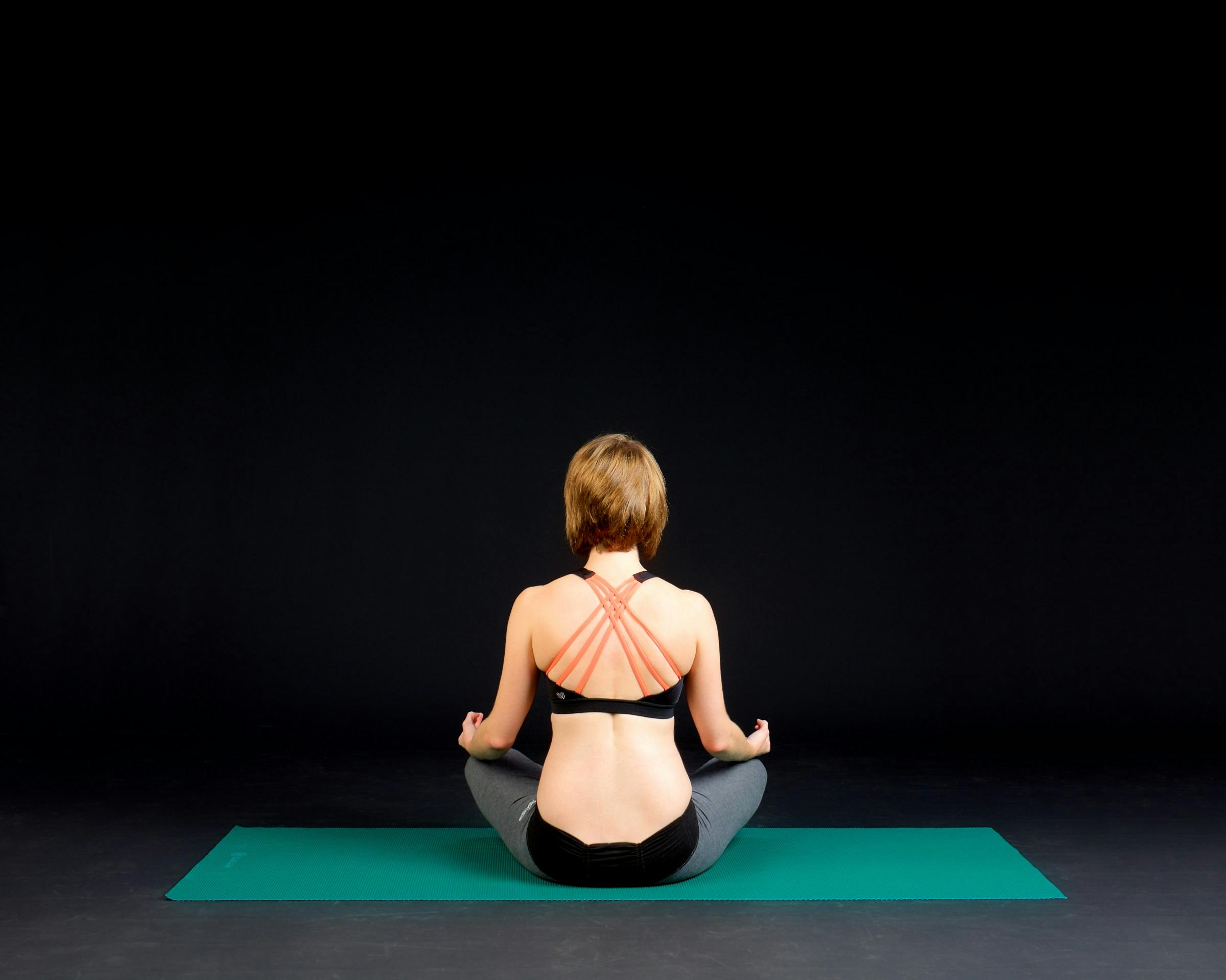
Yoga is one of the best possible strength training exercises you can do with COPD. Why? Because it's slow-paced, great for your heart, and helps you practice steady, deep breathing while you exercise.
Yoga involves involves slow, steady movements and holding poses that help you build up muscle strength and improve your balance. Practicing controlled, deep breathing is also an integral part of yoga practice, which is particularly helpful if you struggle with breathlessness.
Yoga can help you build the strength you need to do even more kinds of exercise and can help you train yourself to control your breathing whenever you do physical activities. To practice yoga at home you can use yoga DVD's or you can access a huge number of yoga instructional videos online and on YouTube.
Chair Exercises

Many of the techniques we'll show you in the following sections “Upper Body Exercises” and “Lower Body Exercises” can be done as chair exercises. That means you can do them while sitting upright in a chair, and they're a great way to get some extra strength training in without having to leave your seat.
All chair exercises are exercises you can do at home, and they allow you to work out your muscles without having to expend energy to walk or stand. This can help reduce breathlessness and fatigue when you exercise, and is a great solution for people with COPD who have limited energy


